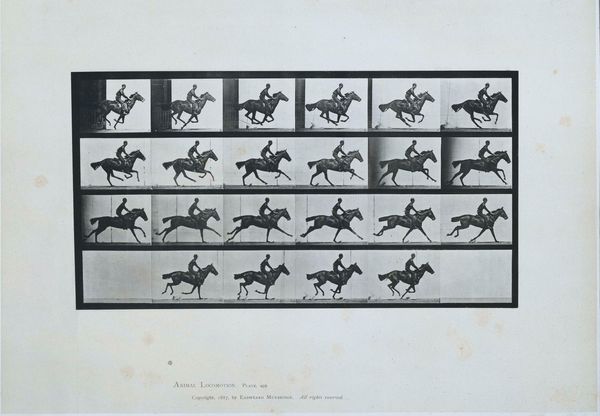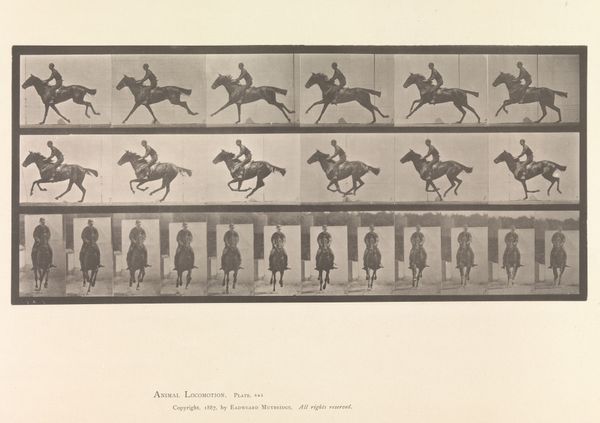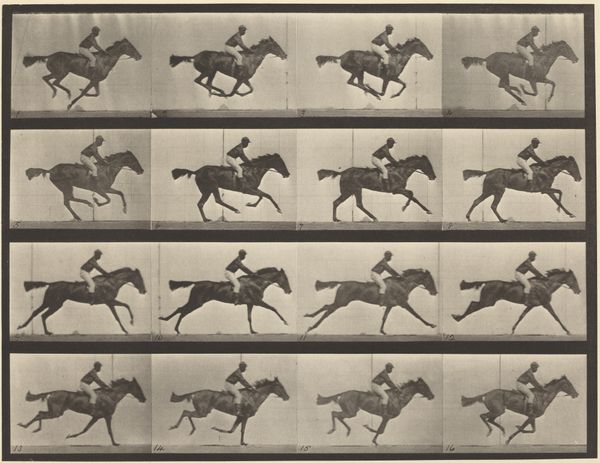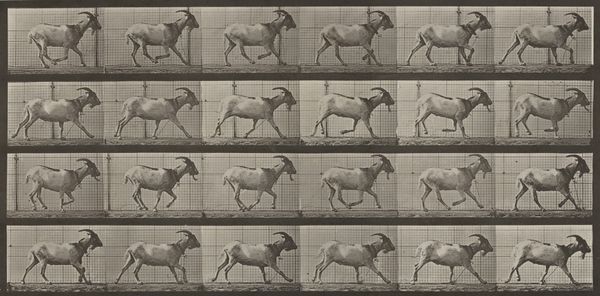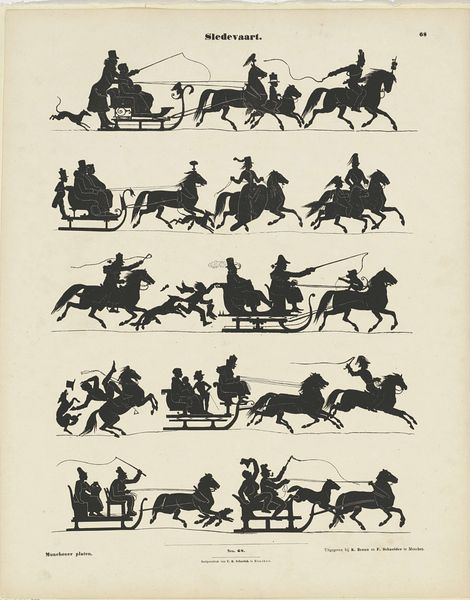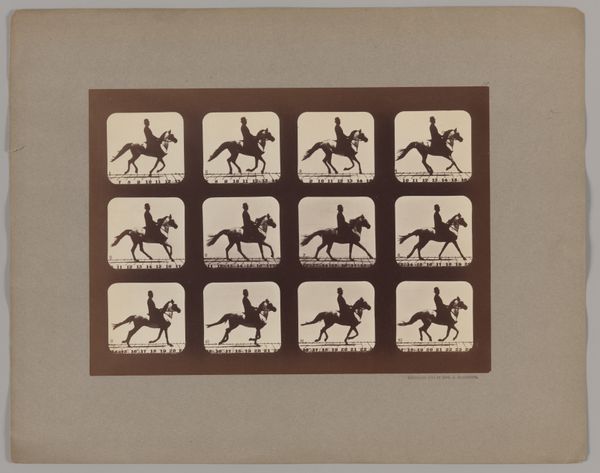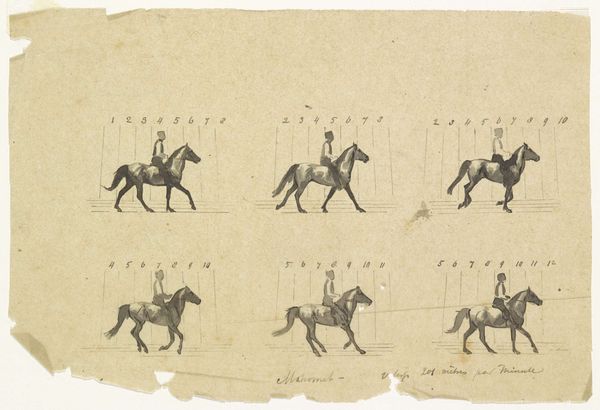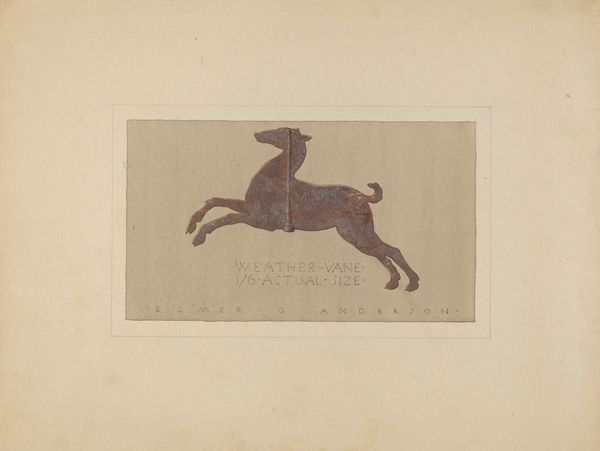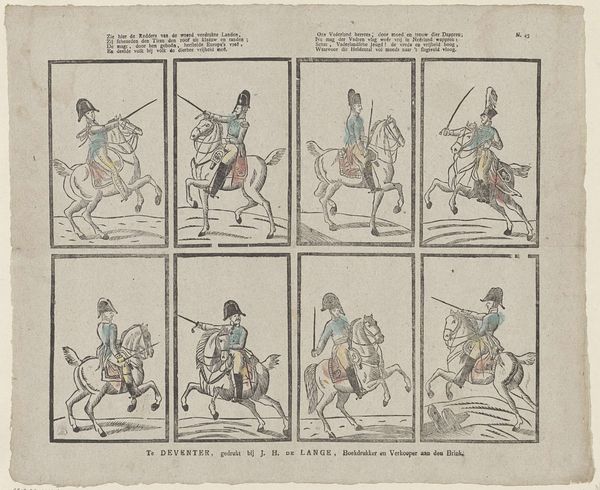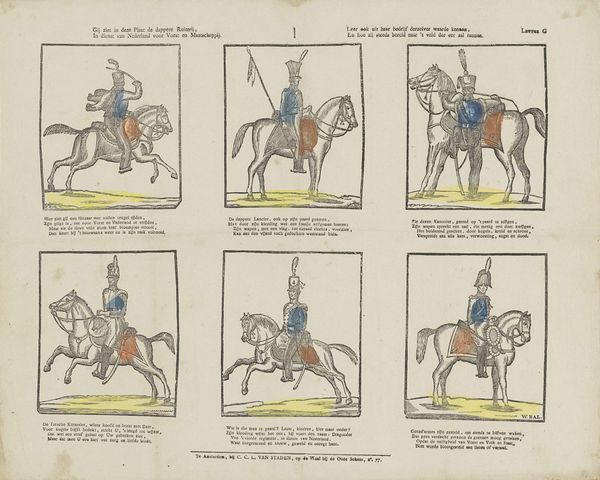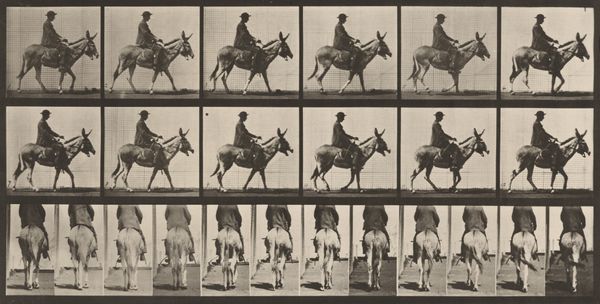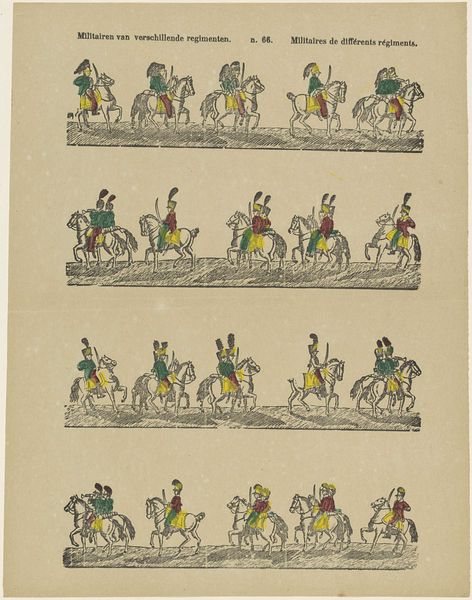
photography, gelatin-silver-print
#
portrait
#
animal
#
photography
#
gelatin-silver-print
#
realism
Dimensions: image/sheet: 10.2 × 20.6 cm (4 × 8 1/8 in.) mount: 13.3 × 21.6 cm (5 1/4 × 8 1/2 in.)
Copyright: National Gallery of Art: CC0 1.0
Eadweard Muybridge made this photographic study, "The Horse in Motion," in 1878 using a battery of cameras. This wasn't just art; it was scientific inquiry, aimed at settling a debate about whether all four hooves of a horse leave the ground at once during a gallop. The grid format, dictated by the array of cameras, emphasizes the study's analytical nature. What’s really interesting here is how this work intersects with industrial progress. Photography itself was a product of technological advancement, and Muybridge's experiment was deeply intertwined with the interests of Leland Stanford, a railroad magnate. Stanford sought definitive proof of the horse's gait to optimize their performance, reflecting a broader societal push toward efficiency and control. So, next time you see a galloping horse in a film, remember Muybridge, and the fusion of art, science, and industry that made it possible. It challenges us to think about the relationship between labor, leisure, and technological progress.
Comments
No comments
Be the first to comment and join the conversation on the ultimate creative platform.
